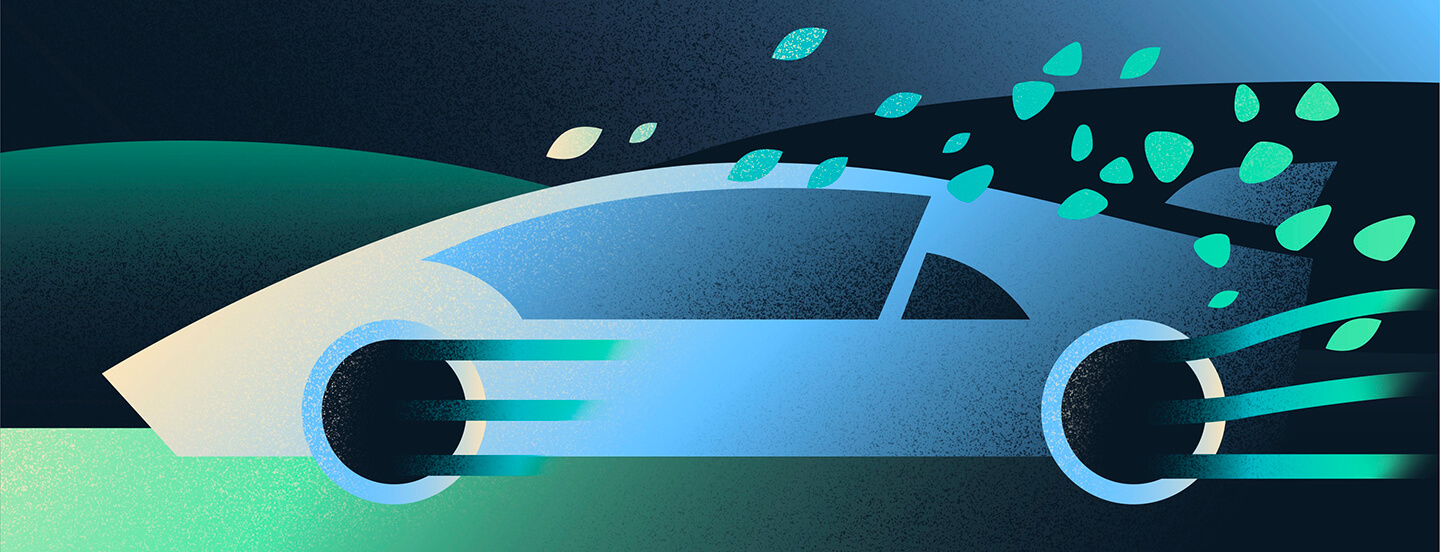
Changing Lanes: Sustainable Luxury in Automotive
Traditionally, luxury focused on premium designs that cater to an elite clientele. It excelled with impressive engineering, timeless design, exceptional quality and precision craftsmanship. However, in the automotive industry, this elite clientele is currently a niche demographic. Moreover, it is very quickly becoming a lost cause. This is primarily due to the rising importance of sustainability and electrification, two things for which the traditional market has little love. The modern consumer, however, is very different. The rise of the sharing economy, the democratization of travel, electrification and new legislation have made luxury more attainable. As a result, luxury car brands must now meet the needs of this new, broader spectrum of consumers.
Put simply, they must evolve and reimagine the definition of luxury, putting sustainability front and center—or risk becoming irrelevant.
What is a luxury experience?
To support luxury car dealerships and OEMs, we have outlined guiding principles for designing a superior end-to-end service experience:
Time is the new luxury
Design an experience that enables people to take a break from a fast-paced world, savor the moment and recharge. The constant hustle and bustle of modern life leaves consumers craving moments of respite and reflection. In response, designers have begun crafting experiences that offer a much-needed break from the hectic pace. New luxury now enables us to disconnect from the digital noise and reconnect with ourselves and our surroundings.
Service is everything
Intentionally designing the entire customer lifecycle experience will ensure the right features and products are prioritized to maintain customer satisfaction, which also empowers your delivery teams to host customers with service excellence, thereby driving loyalty.
From the moment a customer walks into a dealership to post-purchase support, every touchpoint should be meticulously crafted. Whether providing a seamless test-drive experience, offering transparent and informative purchasing guidance, or delivering exceptional after-sales service, automotive brands shine by going the extra mile and prioritizing customer satisfaction and employee experience.
Attention to detail
While personalization is critical, the attention to detail makes the entire experience feel exclusive. Seamless design means raising the standard across the entire experience, whether thoughtfully crafting the stitching on the leather seats in a customer’s preferred color or precisely engineering a sound system for a specific kind of listener. A particularly vital detail is the integration of a customer’s preferred technology and software within the vehicle, creating a truly luxurious and immersive experience. By catering to the finest nuances, making them accessible and ensuring no detail is overlooked, brands fulfill consumer expectations and create an atmosphere of refined excellence.
Sustainable solutions
Incorporate sustainable solutions: emphasizing ethical sourcing and fair-trade practices, utilizing sustainable and eco-friendly materials to reduce their environmental impact. Eager to mitigate their negative impact on our climate, today’s increasingly conscious consumer is willing to pay more for ethical products and services. According to a Nielson Study, 73% of Millennials are willing to spend more on a product if it comes from a sustainable or socially conscious brand.
In service of transparency, supply chain sustainability and carbon emission data should be freely available to a customer at point of purchase. Claims must be backed up with proof points to avoid ‘green washing’—this new generation of luxury consumers want access to information that proves they are making informed, sustainable choices.
Responding to this societal behavior, designers are working hard to incorporate sustainable practices into business offerings. By utilizing ethical sourcing, fair-trade practices, sustainable and eco-friendly materials, organizations can reduce their ecological footprint, minimizing waste and harmful emissions. Customers are drawn to brands that prioritize sustainability because they feel they can support the vitality of the environment through purchasing choices.
Make it memorable
Luxury brands must intentionally design awe-inspiring moments to strategically leave a lasting impression, encouraging customers to discuss memorable details long after the user experience. By intentionally designing unforgettable, signature moments, brands strategically ensure their customers will generate buzz around the experience and draw new customers to the brand. Going above and beyond enables luxury brands to forge an emotional connection that extends beyond the product. Through these awe-inspiring, memorable experiences, brands cultivate loyalty, word-of-mouth recommendations and a reputation that endures.
The luxury automotive customer is changing
Luxury car sales are now coming from a younger and more global audience with a new set of demands and expectations. Compared to previous generations, these customers are a whole new animal: they are digital natives interested in technology, making decisions based on ethics and sustainability and interacting with brands who offer complete experiences. They also expect to be reached in different ways, through different digital channels, with less conventional access to products. It is imperative OEMs listen and respond by evolving at the same pace as modern consumers. The inability to do so will result in a shrinking market share and lost revenue streams.
All these details make targeting the luxury market a unique challenge for automotive brands. Without the right research data and planning, it is easy to miss the mark.
So, what is the best way forward?
While all OEMs are evolving their supply chain to comply with regulation, Luxury OEMs have a unique opportunity to create differentiated value by weaving new materials and sustainable production processes into the narrative of their products and brand.
In the near term, OEMs will find opportunities in sustainability audits and reporting. Compliance is a key part of establishing trust and building brand loyalty. Moving into the midterm, it will be beneficial to focus on establishing a green supplier network. Once this is in place, OEMs can make long-term plans to establish supplier partnerships with the intention of rethinking their design stage and maximizing the circularity of their parts.
With an inevitable transition to EVs (electric vehicles), Luxury OEMs need to think about how they can extend their luxury offerings into the way vehicles are sold, powered, maintained and driven.
To achieve this goal, the luxurious transport experience must take precedence in the near term. OEMs must conceptualize the experience and surpass expectations before capitalizing on additional opportunities. In the midterm, OEMs will need to shift their focus to premium renewable energy. Consumers expect ethical resources but not at the sacrifice of performance. Once these two stages are complete, OEMs can focus on such long-term priorities as exclusive driver clubs, which should always leverage key digital services that support the experience of sustainable EV ownership and inform future driving choices.
By focusing on key experiences like purchase, maintenance and charging, Luxury OEMs can shift the perception of owning EVs away from being difficult towards being frictionless, attracting more luxury customers into purchasing sustainable vehicles.
Emerging digital experiences place users in a world within everyday reality, one full of digital real estate, new communities and virtual collaborations. This is why OEMs must focus on immersive customization in the near term. As an extension of this customization, OEMs can find mid-term opportunities in technology that alleviate the frustration of long charge times, such as AI-based voice bots, smart personal assistants and intelligent digital interfaces. But in the long term, more opportunities will be found in frictionless charging and servicing.
Circularity enables Luxury OEMs to capture the full value of their vehicles as they change hands over time, as well as make meaningful brand partnerships that attract new audiences. From a production perspective, circular processes can meaningfully reduce material costs and reduce emissions by up to 70%.
As recent partnerships like Ferrari and Ray-ban have proven, there are many near-term opportunities in luxurious fashion. Continuing the trend, in the midterm, OEMs will find more success in the authenticated resale marketplace. Here, new consumers can safely purchase luxury goods at reduced prices. But in the long term, the real value will be found in individuality as consumers seek perfectly imperfect, one-of-a-kind items.
Final thoughts
To excel in each opportunity area, OEMs need to embrace the following:
- Experiences that hook new audiences: As Gen Z is expected to become the largest luxury vehicle customer segment and impacting the future of travel, it’s crucial for the industry to remain relevant to this changing consumer base.
- Business models beyond the car: Premium seats and driving features are not the only way forward in luxury. In a new frog report titled ‘Beyond the Vehicle’ we outline the potential for thinking holistically about vehicle-related customer experiences.
- Strong partnerships: Luxury brands can form strategic partnerships to extend their credibility, empowering them to experiment in new areas and appeal to different types of consumers.
- Compelling stories: Each opportunity area needs to be expertly communicated to customers so that they fully buy in to the new more sustainable definition of luxury.
Meeting and exceeding customer expectations is an arduous task. It is vital to grasp the essence of a target audience—their true desires, aspirations and requirements. Only then can an offering be analyzed, making it possible to craft an all-encompassing experience that truly resonates. Making luxury a priority during the design phase will undoubtedly put OEMs in the driving seat on the new highway of growth.
Supporting Research By
Liam Ahern, Senior Service Designer, frog London
Disha Mittal, Service Designer, frog London
Matt Yeabsley, Senior Consultant, Capgemini Invent UK
Brad Young, Head of Automotive, Capgemini Invent UK
Marcelo Ramirez, Senior Service Designer, frog Mexico City Alumni

Bethany leads service design at frog and has experience working across a multitude of industries. She ensures no interaction or touchpoint is left to chance, but rather is designed at both the micro and macro levels. Her ability to lead multiple groups to design each part of an end-to-end experience is what sets her apart; she provides expertise on both the overall strategic approach and the detailed delivery.
Recently, Bethany hosted a panel titled “How Service Design Enables Success Across Industries,” featuring leaders from Airbnb, Walgreens and a healthcare startup, highlighting the transformative impact of service design across sectors. This initiative, along with her insights in the “State of Service Design” report, underscores her commitment to advancing the field and sharing knowledge on global platforms.

Melodie is a hands-on design leader and frog UK’s Head of Manufacturing, Automotive and Life Sciences Industries. She elevates multidisciplinary teams of frogs to develop innovative value propositions and experiences, leading from insight through to execution. Melodie’s sweet spot is at the intersection of creativity, strategy and technology, where she tackles complex problems and makes them delightfully simple. Her work drives satisfaction for customers and shareholders alike.

Luke is a multi-disciplinary designer with a background in Product Design, Service Design and Design Strategy. He specializes in creating engaging experiences and propositions, turning insights into viable product and service concepts. He has a breadth of design and innovation experience, successfully launching new products and services for household brands across a wide range of industries including transportation, consumer goods, retail, automotive and financial sectors.
We respect your privacy
We use Cookies to improve your experience on our website. They help us to improve site performance, present you relevant advertising and enable you to share content in social media. You may accept all Cookies, or choose to manage them individually. You can change your settings at any time by clicking Cookie Settings available in the footer of every page. For more information related to the Cookies, please visit our Cookie Policy.